Crisis on display: Real dynamics of Russia-Armenia-West relations From diamonds to missiles
On March 2, 2024, during a speech and Q&A session with the media following the Antalya Diplomatic Forum, Russian Foreign Minister Sergey Lavrov effectively acknowledged the collapse of relations with Armenia.
“We regret that the Armenian leadership has apparently made a deliberate decision to consistently pursue a course of deteriorating relations with Russia. This is not the behavior of an ally. The Armenian leadership has decided to bet on non-regional countries that are courting Yerevan, promising to help Armenia in all its troubles, provided that it breaks ties with Russia and the integration structures created in our shared region. It takes political courage to state that since 1991, Armenia has taken a fundamentally wrong course in its relations with Russia. If this is the assessment of the entire Armenian leadership, based on the will of the people, then it necessitates a significant reconsideration of many aspects of Russian-Armenian relations. The picture is far from flattering,” Lavrov said.
Don’t hold back on expressions!
Indeed, since the spring of 2018, when Serzh Sargsyan, a Moscow-oriented leader, was ousted by a revolution, and Nikol Pashinyan, openly pro-Western, came to power, relations between Russia and Armenia have notably deteriorated. Mutual accusations and reproaches have dominated political rhetoric and the media in both countries, with neither side shying away from harsh remarks. In Russian media and among experts, Armenia’s new "revolutionary authorities" were often labeled as Western puppets. Tensions in the relationship skyrocketed after the 44-day war in 2020, when Yerevan accused Moscow of "betrayal."
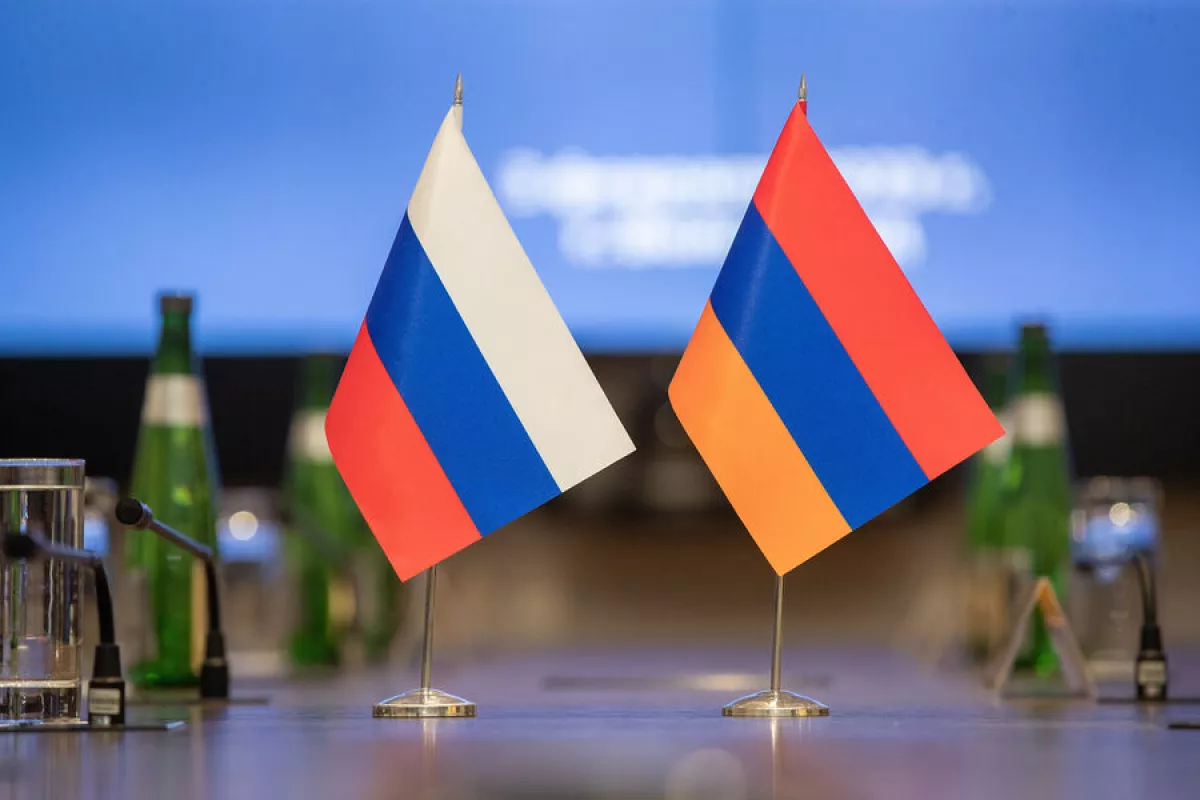
Events then unfolded rapidly: the deployment of an EU monitoring mission in Armenia, the symbolic freezing of participation in the Collective Security Treaty Organization (CSTO), a cooling of relations within the Commonwealth of Independent States (CIS) framework, a rushed pivot towards the West, and, at its peak, the Brussels meeting with its well-known agreements, cementing Armenia’s shift from being Russia’s “outpost” to a “satellite of the West.” In recent months, verbal clashes between the Speaker of the Armenian National Assembly, Alen Simonyan, and Russia’s Foreign Ministry spokesperson, Maria Zakharova, have become almost routine. It feels like it's only a matter of time before someone in either Moscow or Yerevan loses patience, and diplomatic relations are severed.
Stop! Don’t you think, dear readers, that we are witnessing a carefully orchestrated spectacle, whose scriptwriters are trying to convince the world of an alleged deep rift between Russia and Armenia? In reality, relations between the two countries have not only remained intact, but are in fact entering a new phase of strengthening. What leads us to this conclusion? Let’s break it down step by step.
Numbers speak louder than politicians
At yesterday's (September 13) meeting of the co-chairs of the Armenian-Russian Intergovernmental Commission on Economic Cooperation, held in Yerevan with the participation of Armenia’s Deputy Prime Minister Mher Grigoryan, Russian Deputy Prime Minister Alexey Overchuk presented significant data. According to him, by the end of 2024, the trade turnover between Armenia and Russia could reach $14–16 billion. Overchuk noted that economic cooperation between the two countries is developing dynamically and covers virtually all sectors of the economy.
“Numbers speak louder than words. In 2023, mutual trade increased by 55.8%, reaching $7.4 billion. This year, the growth rate is even higher: in the first half of the year, trade turnover reached $8.4 billion, and by the end of the year, we could reach a figure of $14–16 billion. For comparison, in 2020, this volume was only $2.3 billion,” he emphasized.
The parties also discussed current issues related to the implementation of joint projects in the fields of industry, energy, transport, logistics, as well as finance and investments.
Overchuk's remarks, and especially the figures he presented, suggest that the disagreements between Moscow and Yerevan are nothing more than a political performance meant to mislead. In reality, they reveal the strategic depth of bilateral relations. While publicly, Moscow and Yerevan have been trying to convince the international community of a serious crisis, their trade turnover has not only avoided a decline but has been growing at a rapid pace. For instance, in 2021, trade transactions amounted to $2.6 billion, and in 2022 they increased by 91.7%, reaching $5 billion. Last year, that figure grew to $7.4 billion, and this year the parties are aiming for a record $14–16 billion. As we can see, Russia continues to be the primary financial backer of Armenia’s economy, and Armenia’s dependence on trade and economic ties with Moscow remains unchanged.
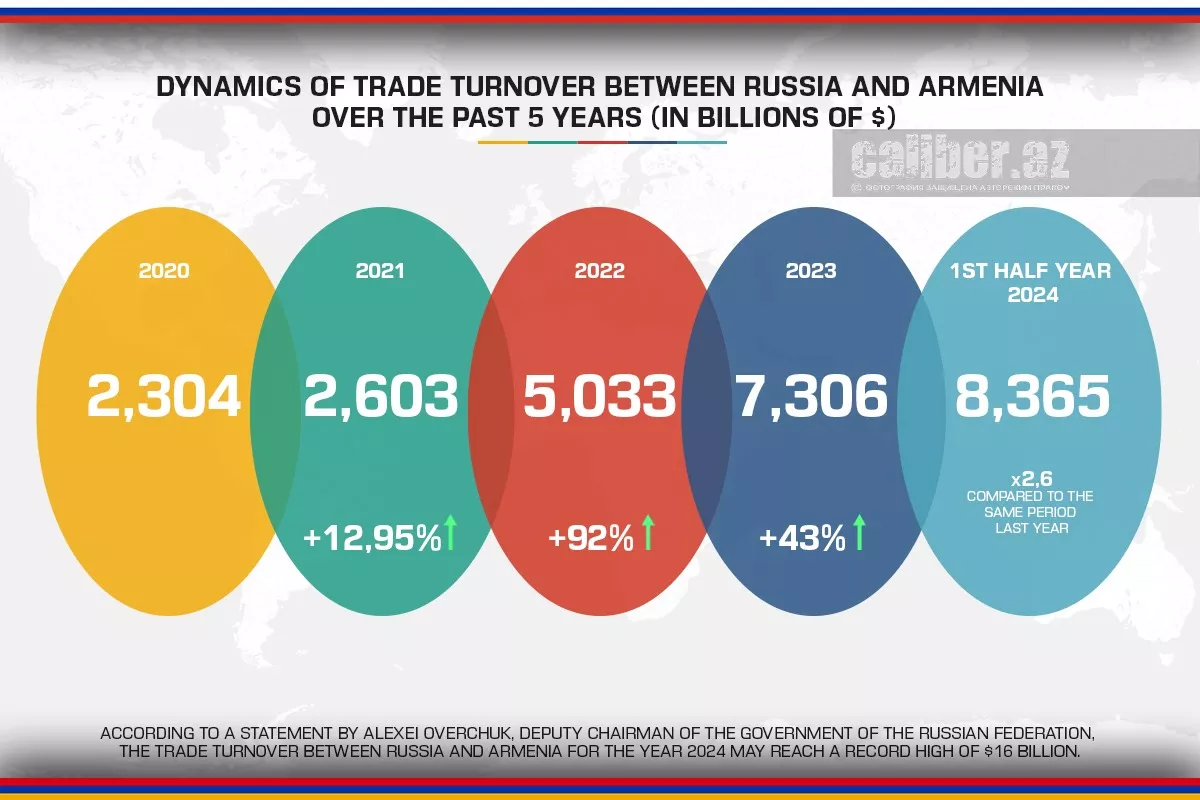
What’s driving the growth?
How is it possible that, despite Yerevan's pro-Western course and the widely circulated narrative of a "serious cooling" in Armenian-Russian political relations, trade turnover between Russia and Armenia continues to show impressive growth?
It's clear that Armenia’s stagnating economy, with its limited industrial capacity, is unlikely to independently drive such a sharp increase in trade. So, where’s the catch, as Boris Yeltsin once said? The answer is fairly straightforward: the rapid growth in trade over the past three years has been primarily fueled by various re-export and resale schemes involving foreign goods and equipment, including dual-use products. Armenian and Russian companies have been transferring these goods, circumventing US and EU sanctions, through intermediary and transport companies.
By the way, it wasn’t just Armenia that profited from re-exports. War is an expensive business, and with the EU’s refusal to purchase Russian oil and gas, Russia urgently needed new sources to replenish its budget. And it found one.
“Alongside the re-export of dual-use goods, the rapid growth in Armenia's foreign trade was driven by a sharp increase in the re-export of gold and diamonds. Of Armenia’s $8.4 billion in exports, 21.5%, or $1.8 billion, came from gold exports, and 7%, or $589 million, from diamond exports. In total, 28.5% of all Armenian exports accounted for the re-export of Russian gold and diamonds to the UAE and Hong Kong,” said Armenian economist Aghasi Tavadyan.
According to him, Armenian export volumes in 2023 increased 2.8 times compared to the previous two years, with most of this growth occurring in the last two months of the year, largely due to transactions involving Russian gold and diamonds.
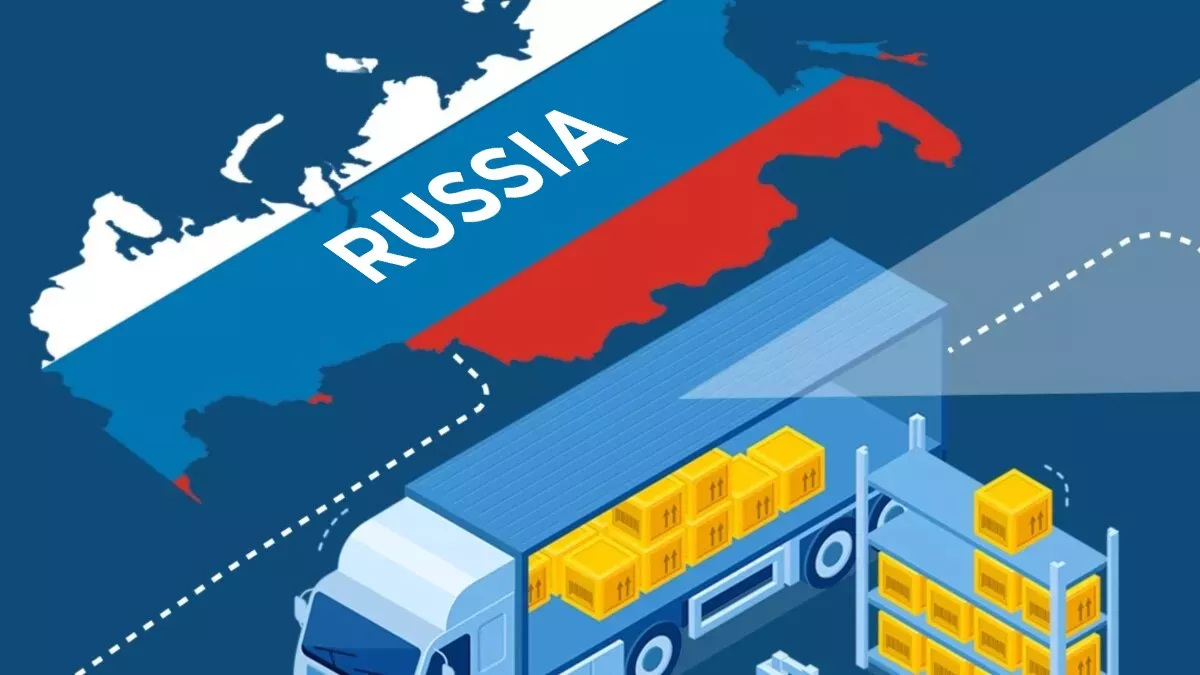
The West sees everything but stays silent
Armenia’s rapid enrichment through the re-export of goods to Russia has allowed Yerevan to significantly boost its foreign arms purchases, including from the West. Essentially, Russia provides Armenia with the means to earn, while the West turns a blind eye. Paris, Brussels, and Washington, who are quick to impose anti-Russian sanctions and criticize those who evade them, are fully aware of where Armenia’s extra funds are coming from. Yet, following the principle that “money doesn’t smell,” they choose to ignore it, viewing Armenia as a "favorite child" that always needs to be "rescued." And it is being rescued.
Not only is Armenia supplied with weapons, but it also receives substantial financial assistance. For instance, the European Union has allocated €2.6 billion to Yerevan, officially designated for infrastructure development, digitalization, climate projects, transport, and democratic reforms. However, the funds Armenia saves thanks to its external sponsors are generously funneled into its militarization efforts.
The US isn’t idle either: USAID plans to more than double its financial assistance to Armenia, increasing it from $120 million to $250 million, while American troops and equipment are already present in Zangezur. Meanwhile, Armenia’s "big sister" – Macron’s France – devotes more time and resources to Armenia than to its own citizens. Paris, through India and other countries, supplies Armenia with weapons produced under French licenses, in addition to direct deliveries.
Moreover, this summer, reports indicated that France plans to involve defense companies in manufacturing military equipment in Ukraine, including the well-known KNDS company, formed by France's Nexter and Germany's Krauss-Maffei Wegmann. According to Caliber.Az, part of the weaponry produced at this facility is expected to be sent to Armenia.
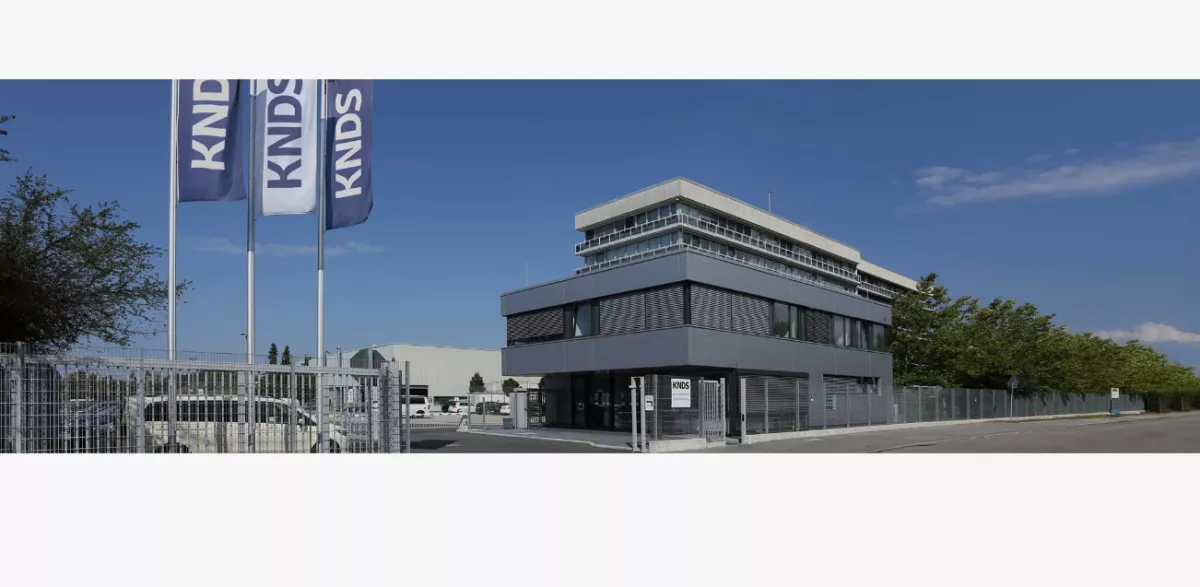
The delicate treatment of Armenia by the US, Russia, and France — the three co-chairs of the now-defunct OSCE Minsk Group — is hardly surprising. These countries have traditionally supported Yerevan. The "Armenia" project is crucial for them to maintain their influence and presence in the region. It is understandable that Paris, Washington, and Moscow, whether individually or collectively, will take steps to keep this project alive in the South Caucasus.
Despite mutual criticism and threats, including nuclear rhetoric, when it comes to Armenia, the positions of Russia and the West strangely align. A clear example of this was revealed by Politico last October, at the height of the Russia-Ukraine war. The report detailed a secret meeting in Istanbul on September 17, just days before the launch of the counterterrorism operation in the Karabakh region. The meeting involved US Senior Advisor for the Caucasus Louis Bono, EU Special Representative for the region Toivo Klaar, and Russian Presidential Envoy Igor Khovaev, who oversees relations between Armenia and Azerbaijan. According to Politico, the purpose of the meeting was to devise strategies to pressure Azerbaijan and prevent it from restoring its sovereignty and territorial integrity.
Although Azerbaijan, as subsequent events demonstrated, did not yield to this external pressure, the mere fact of such negotiations underscores that even amidst the Russia-Ukraine conflict, the Russians, Europeans, and Americans can find common ground on the issue of Armenia, opening diplomatic channels when necessary.
From show to Armenia’s militarization
The situation with the West is clear: its support for Armenia can be explained by Yerevan's declared "pro-Western" stance, although in practice, Armenia's position has not changed. It remains a member of the CSTO and the Eurasian Economic Union (EAEU), and Russian troops and border guards continue to be stationed on its territory. The West seems willing to overlook this, treating Armenia as a favored partner.
The situation with Russia is more complex. The public feuding between Moscow and Yerevan, involving figures such as Zakharova and Simonyan, create an illusion of strained relations. However, this is just a smokescreen. In reality, Russia remains committed to its ally. This is not only evident in Overchuk's plans to boost trade turnover. According to open-source information, Russia has resumed arms supplies to Armenia. Specifically, this includes the delivery of "Smerch" missiles, with contracts for these purchases having been finalized several years ago.
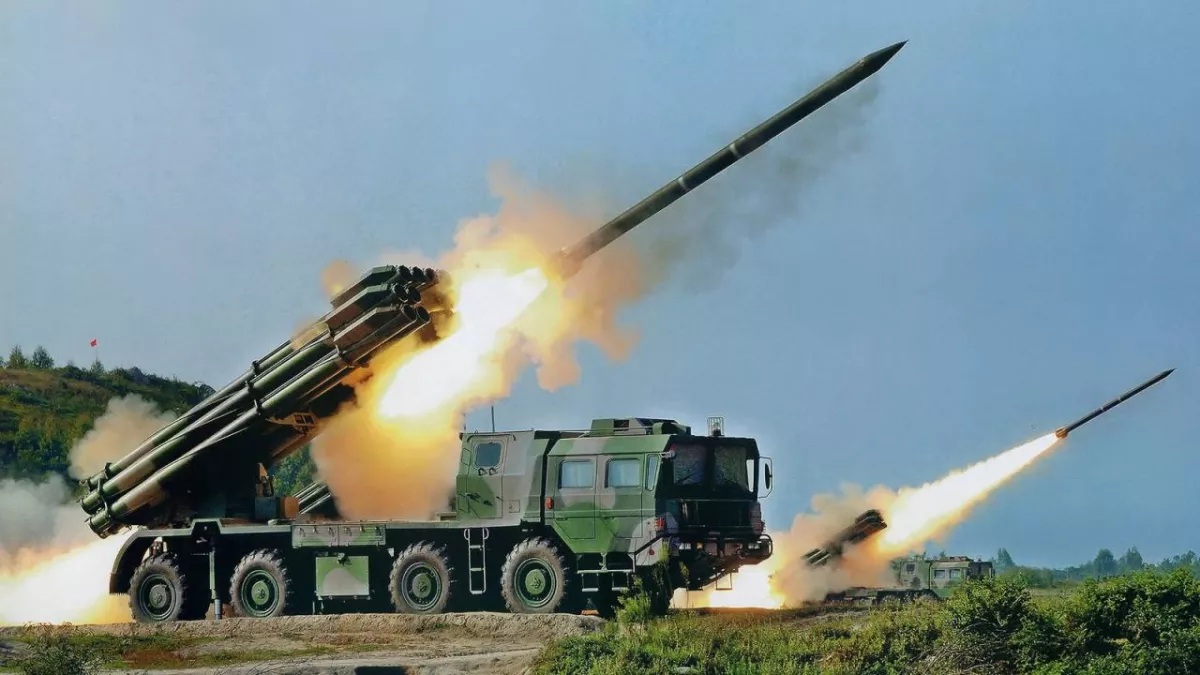
Additionally, earlier this year, Gagik Melkonyan, a deputy from the ruling "Civil Contract" party and a member of the parliamentary defense and security committee, stated that a new shipment of Russian weapons had already arrived in Armenia under previously signed contracts. In March, Andranik Kocharyan, the head of the parliamentary committee, confirmed that "the purchases that were made are now starting to be implemented."
"The issue was about the lapses or undelivered weapons to Armenia. Now, Russia has found a way to transfer these weapons to Armenia," Kocharyan said in an interview with OTA.
Russian arms supplies to Armenia continue to this day. Meanwhile, since 2022, Russia has not sent any ammunition to Azerbaijan, citing the war with Ukraine as the reason. Essentially, Moscow, which has agreements with Azerbaijan to develop interstate relations based on international law and the February 2022 Declaration of Allied Interaction, is effectively asking Azerbaijan to "wait" due to events on the Ukrainian front. At the same time, Armenia, which seemingly has strained relations with Russia, continues to receive various types of weaponry as if there were no tensions at all.
Conclusion
Today, as the world is engulfed in brutal conflicts, there is a crisis of trust between nations. Despite this, official Baku maintains a consistent approach based on openness in international relations and naturally expects a similar approach in return. The relationship between Russia and Armenia is a matter solely for Russia and Armenia, but only as long as it does not impact the interests and security of Azerbaijan.
By arming Armenia and boosting its economic performance, both Russia and the West are, in effect, pushing the prospect of peace further away and harming the security of the region. Already, Armenian authorities are behaving much "bolder" than they did just a few years ago. This trend will intensify with each new shipment of ammunition and every dollar earned from re-exports. Slowly but surely, the global Armenian community is recovering from the shock of defeat, and traditional allies on the Armenian issue are once again unified in supporting their geopolitical project in the region. Official Baku cannot and will not remain silent or unresponsive to this.








